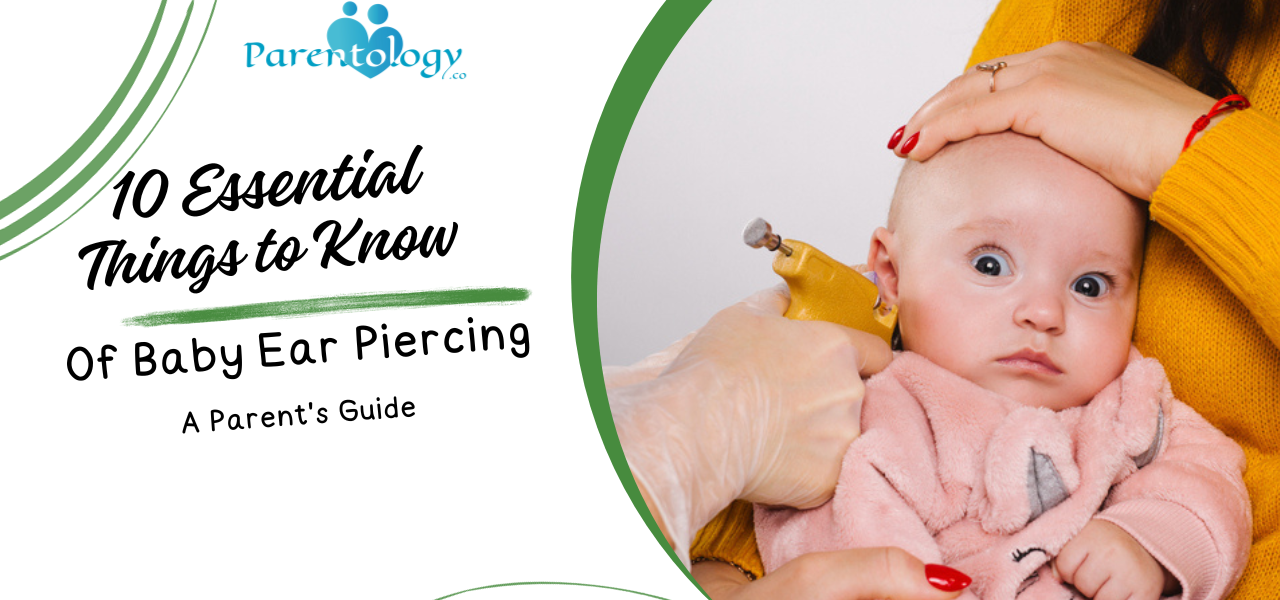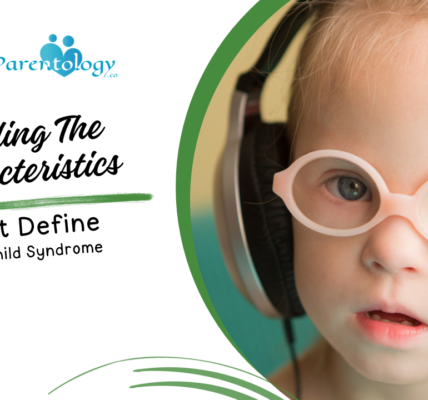10 Essential Things to Know About Baby Ear Piercing: A Parent’s Guide
Piercing a baby’s ears is a significant decision that encompasses cultural traditions, parental considerations, and the well-being of the child. This practice, rooted in various cultures, carries diverse meanings and considerations for families worldwide. Understanding the nuances, age considerations, aftercare, and potential risks are pivotal for parents navigating this decision. Amidst differing opinions and cultural practices, this guide aims to illuminate crucial aspects of baby ear piercing. From the right age for piercing to considerations for a safe and comfortable process, this article endeavors to equip parents with essential insights to make informed choices aligned with their family values and their child’s well-being. Here are 10 crucial aspects you should know about baby ear piercing.
1. Age Considerations:
Piercing a baby’s ears often raises questions about the right age. Healthcare providers generally recommend waiting until the baby is at least six months old. Waiting allows the baby’s earlobes to develop and reduces the risk of complications during the piercing process.
2. Choosing a Professional and Safe Environment:
Selecting a reputable and experienced piercer is paramount for safety. Ensure the piercer uses sterile tools, follows proper hygiene practices, and offers guidance on aftercare. Opt for establishments that adhere to safety standards to minimize potential risks.


3. Baby’s Comfort Matters:
Assess the baby’s health and comfort before piercing. Choose a time when the baby is relaxed and healthy to reduce discomfort during and after the procedure. The baby’s well-being should be the top priority throughout the process.
4. Types of Earrings:
The choice of earrings plays a crucial role in preventing allergic reactions and infections. Opt for hypoallergenic, sterile earrings made of materials like surgical steel, gold, or titanium. These materials reduce the risk of adverse reactions.
5. Aftercare Essentials:
Proper aftercare is vital for preventing infections and promoting healing. Cleaning the pierced area with a saline solution and avoiding turning or removing earrings until fully healed are essential steps in the aftercare routine.
6. Potential Risks:
While ear piercing is generally safe, potential risks include infection, allergic reactions, and keloid formation. Vigilance and proper care can mitigate these risks, but being aware of them is crucial.
7. Communication with the Baby:
Babies cannot consent to piercing, so observing their reactions and ensuring their comfort throughout the process is essential. Pay attention to their cues and provide reassurance during and after the procedure.


8. Cultural Significance:
In many cultures, baby ear piercing holds significant cultural meanings or traditions. Understanding and respecting these cultural practices is crucial when making decisions about ear piercing.
9. Healing Time and Process:
The healing time for baby ear piercings can vary but generally takes a few weeks to a few months. Patience and consistent aftercare play a vital role in ensuring proper healing.
10. Personal Choice and Parental Responsibility:
Ultimately, the decision to pierce a baby’s ears is a personal one for parents. It involves considering the child’s well-being, cultural significance, and parental responsibility. Open discussions and careful consideration are key.
Ear Piercing Process:
The process of piercing a baby’s ears involves several steps:


1. Preparation:
The piercer will sanitize the baby’s earlobes and mark the piercing spots. Before proceeding, ensure the chosen location aligns with the parent’s preferences and is safe for piercing.
2. Piercing Technique:
Using a sterilized piercing instrument, the piercer will swiftly and carefully create the earlobe hole. This process usually takes only a few seconds per ear.
3. Insertion of Earrings:
Immediately after piercing, the chosen earrings are inserted into the fresh piercings. The piercer may provide guidance on turning or adjusting the earrings during the healing process.
4. Aftercare Instructions:
Parents receive detailed aftercare instructions, emphasizing proper cleaning, avoiding contact with irritants, and ensuring the earrings remain in place during the healing period.
Pain Management and Discomfort:
Managing pain and discomfort during and after the procedure is a common concern for parents:
1. Numbing Options:
Some parents opt for numbing creams or sprays to minimize discomfort during the piercing process. Consulting a healthcare professional for recommendations is advisable.
2. Post-Piercing Discomfort:
After piercing, babies might experience mild discomfort or tenderness around the pierced area. Providing comfort and adhering to aftercare instructions can help alleviate any discomfort.


Healing Progress and Red Flags:
Monitoring the healing process and being vigilant about potential complications are essential:
1. Normal Healing Signs:
Healthy healing signs include mild redness, swelling, and slight tenderness around the pierced area. These usually subside within a few days.
2. Red Flags and Infections:
Signs of infection, such as excessive swelling, persistent redness, discharge, or fever, require immediate medical attention. Prompt action is crucial to prevent complications.
Parental Guidance and Decision-Making:
The decision to pierce a baby’s ears involves parental discretion and considerations:
1. Understanding Risks:
Parents should be aware of potential risks, consider the child’s comfort, and weigh cultural significance before making an informed decision.
2. Respecting the Child’s Choice:
As children grow older, respecting their autonomy in decisions related to their body, including wearing earrings, becomes essential.
Cultural Significance and Regional Practices:
The practice of piercing a baby’s ears often holds cultural significance in various communities worldwide. In some cultures, ear piercing signifies identity, heritage, or a rite of passage. Understanding these cultural contexts is vital for parents considering this practice, as it might influence their decision-making process.
Parental Considerations:
The decision to pierce a baby’s ears ultimately rests with the parents. It’s essential to assess personal beliefs, values, and the impact on the child’s well-being before proceeding. Open communication between parents and alignment on the decision is crucial.
Healthcare Provider Consultation:
Engaging in discussions with healthcare providers or pediatricians before ear piercing is advisable. They can provide valuable insights tailored to the baby’s health, ensuring the procedure aligns with the child’s medical well-being.
Pain Management and Discomfort:
While the pain experienced during ear piercing varies among babies, it’s essential to acknowledge potential discomfort. Comfort measures, such as applying a numbing cream before the procedure, might help alleviate any discomfort the baby might experience.
Long-Term Care and Adapting to Earrings:
After the initial healing phase, maintaining proper ear hygiene and ensuring the earrings remain in place is vital. Babies may pull or tug at earrings, and parents need to monitor and ensure the earrings remain secure.


Potential Allergic Reactions:
Infants might develop allergic reactions to certain earring materials. Parents should look out for signs of redness, swelling, or irritation around the pierced area, promptly seeking medical advice if any adverse reactions occur.
Sibling Comparison and Parental Fairness:
In families with multiple children, parents might face dilemmas regarding ear piercing fairness among siblings. Addressing such concerns involves open discussions, respecting each child’s individuality, and making decisions based on individual circumstances.
Ear Piercing at Specialty Stores vs. Medical Facilities:
Parents often contemplate whether to get their baby’s ears pierced at specialty stores or medical facilities. Opting for medical professionals can offer added reassurance regarding hygiene and expertise.
Gender Stereotypes and Ear Piercing:
Ear piercing practices might vary based on societal norms associated with gender. Understanding and challenging such stereotypes play a role in parental decision-making.
Child’s Autonomy and Future Choices:
Some parents prioritize allowing their child autonomy in deciding whether to pierce their ears in the future. Considering this perspective involves respecting the child’s bodily autonomy as they grow older.
FAQs:
1. At what age can you pierce a baby’s ears?
– Healthcare providers often suggest waiting until the baby is at least six months old to reduce risks.
2. What are the risks associated with baby ear piercing?
– Risks include infection, allergic reactions, and potential keloid formation, which can be mitigated with proper care.
3. How do you care for a baby’s ears after piercing?
– Clean the area with a saline solution and avoid turning or removing earrings until the piercing heals completely.
4. What type of earrings should be used for baby ear piercing?
– Opt for hypoallergenic, sterile earrings made of materials like surgical steel, gold, or titanium to reduce risks.
5. Can cultural significance influence the decision for baby ear piercing?
– Yes, many cultures have traditions associated with baby ear piercing, which parents might consider.
6. Is it essential to choose a professional piercer for baby ear piercing?
– Yes, selecting an experienced piercer following proper hygiene practices is crucial for safety.
7. How long does it take for a baby’s ear piercing to heal?
– Healing time varies but generally takes a few weeks to a few months with proper aftercare.
8. Can babies consent to ear piercing?
– No, babies cannot consent, so observing their comfort and reactions is crucial during the process.
9. Are there any specific aftercare instructions for baby ear piercing?
– Clean the area with a saline solution and avoid turning or removing earrings until fully healed.
10. What materials should be avoided for baby ear piercing?
– Avoid materials that may cause allergic reactions, opting for hypoallergenic options like surgical steel or gold.
Conclusion:
Deciding whether to pierce a baby’s ears involves multifaceted considerations, encompassing health, cultural significance, and parental responsibility. Acknowledging the diverse aspects discussed – from piercing procedures to healing processes and parental considerations – empowers parents to navigate this decision thoughtfully.
For further guidance and expert insights on parenting topics, visit Parentology.co. Their comprehensive resources offer valuable support to parents through various stages of parenting, aiding in informed decision-making and nurturing a healthy, loving environment for children.
For a comprehensive guide on parenting strategies and further insights, explore more on Parentology. Their resources can aid in nurturing positive parenting approaches and strengthening family dynamics.





